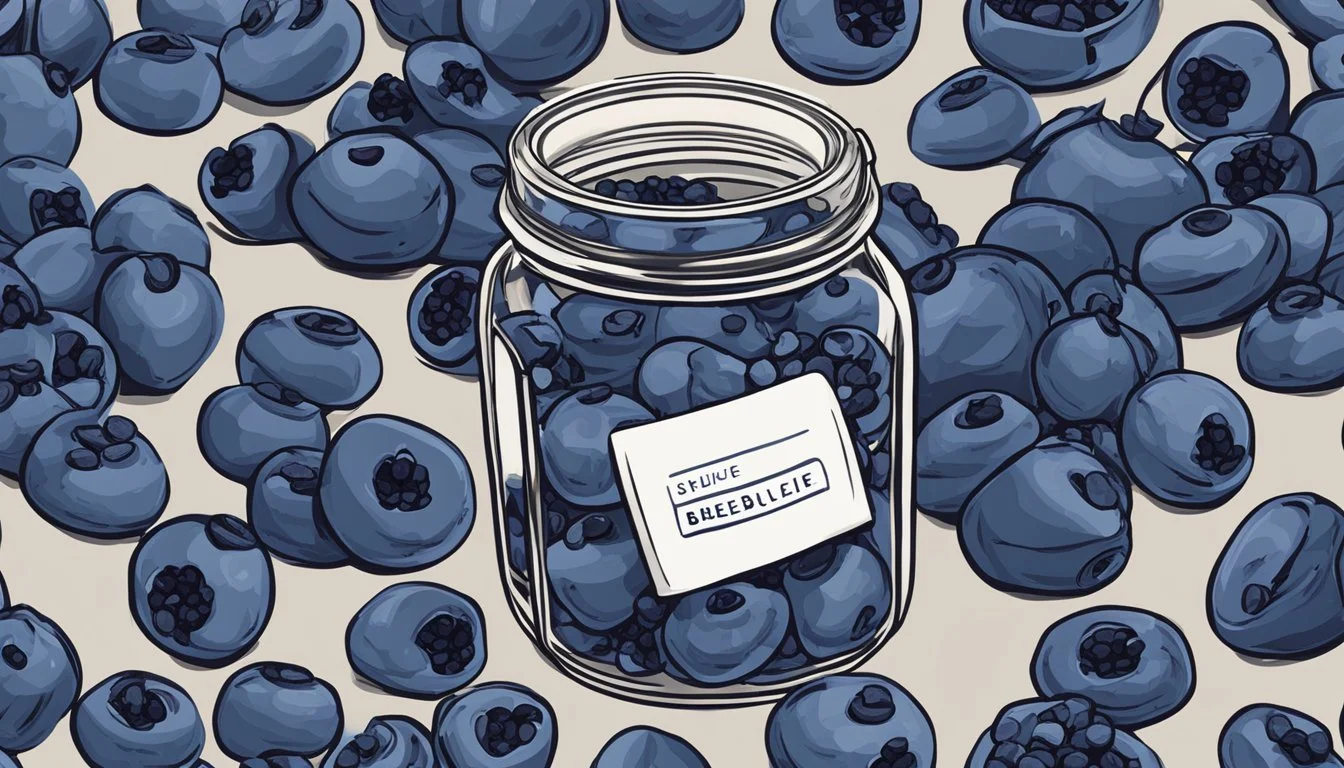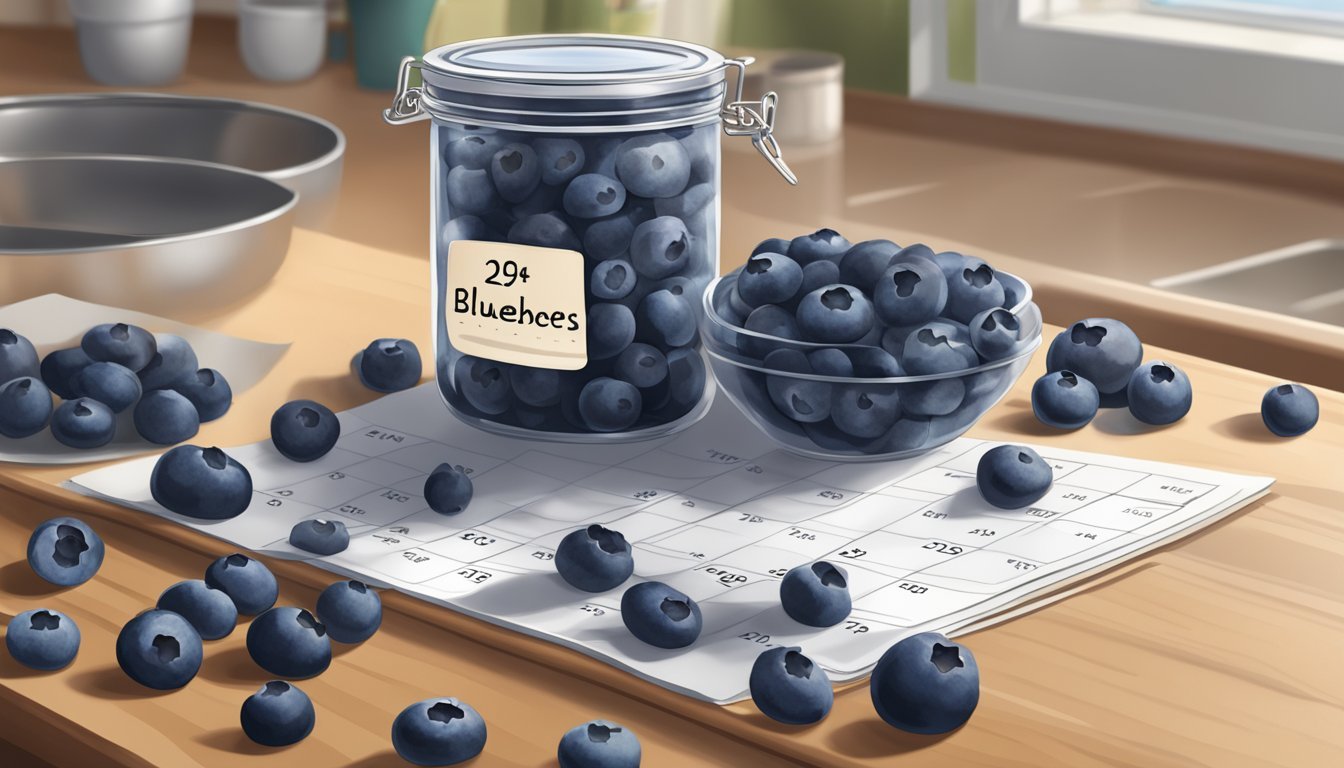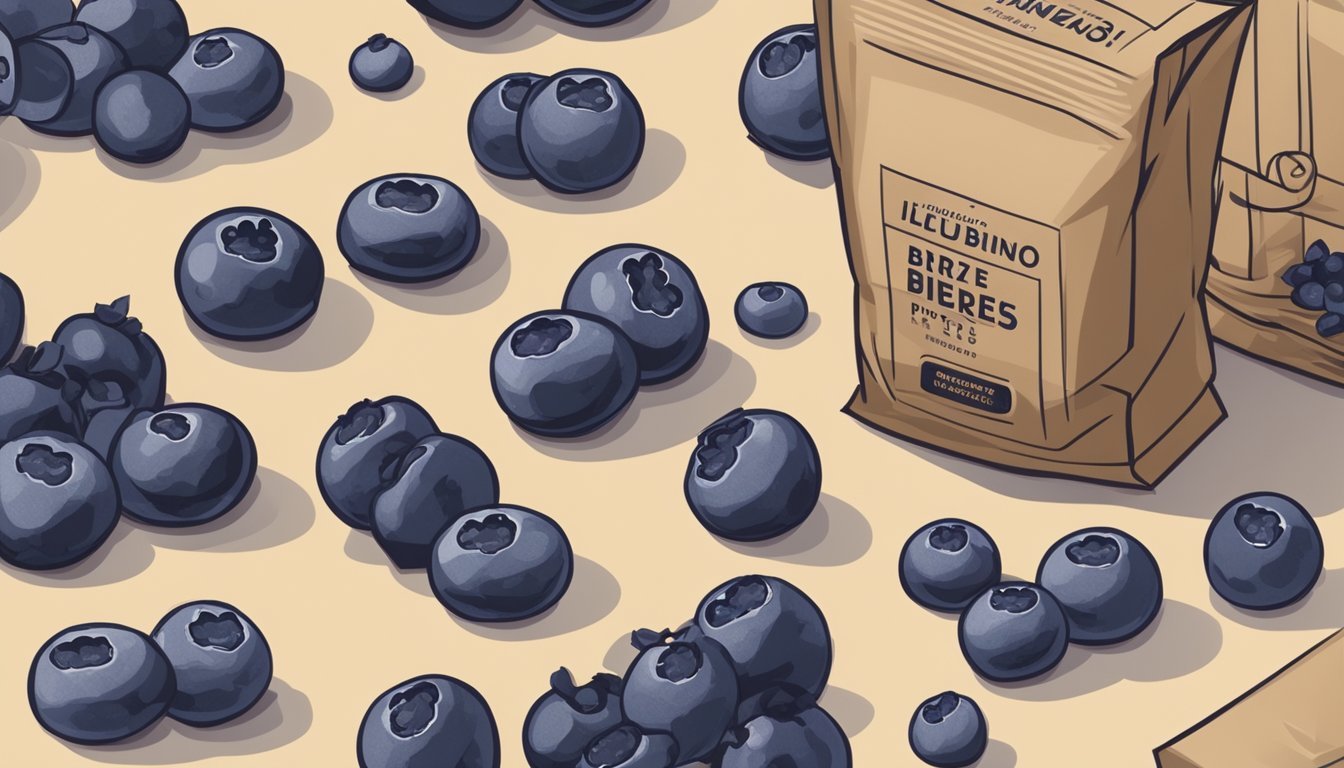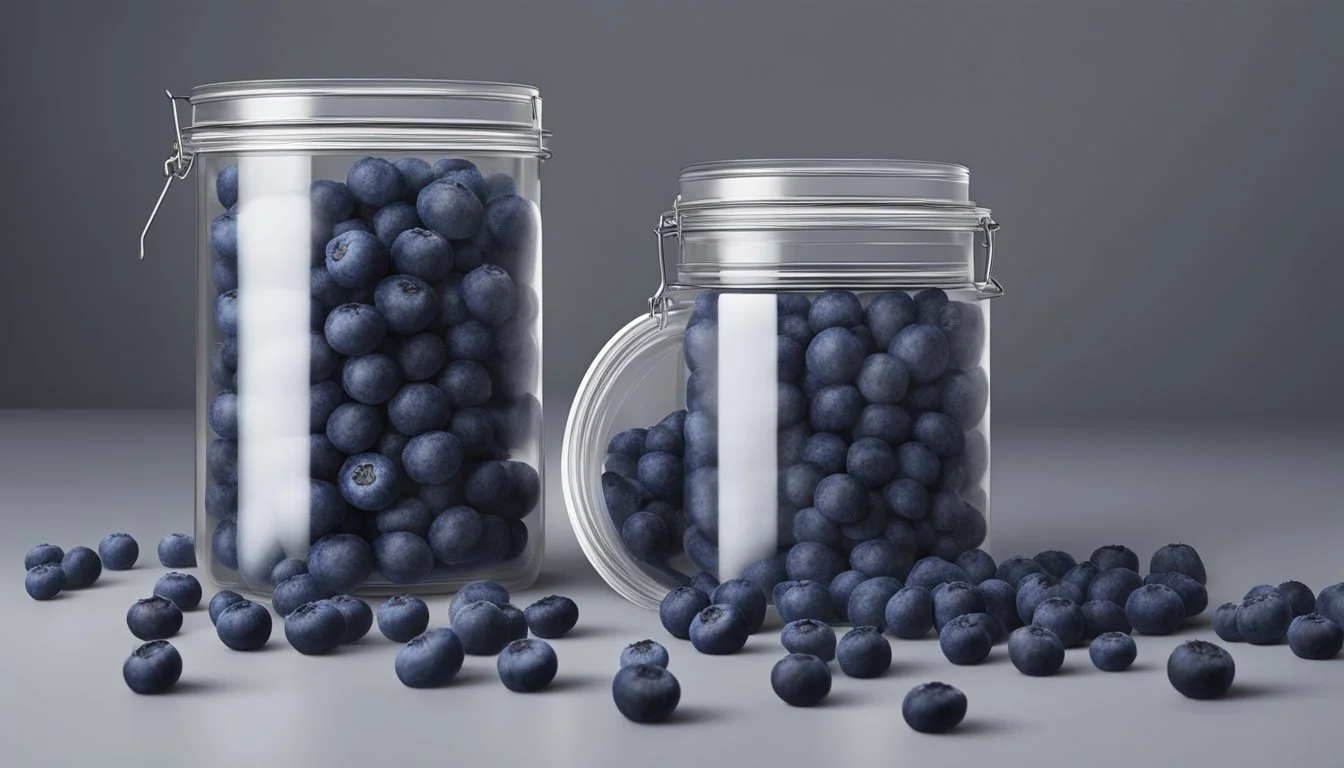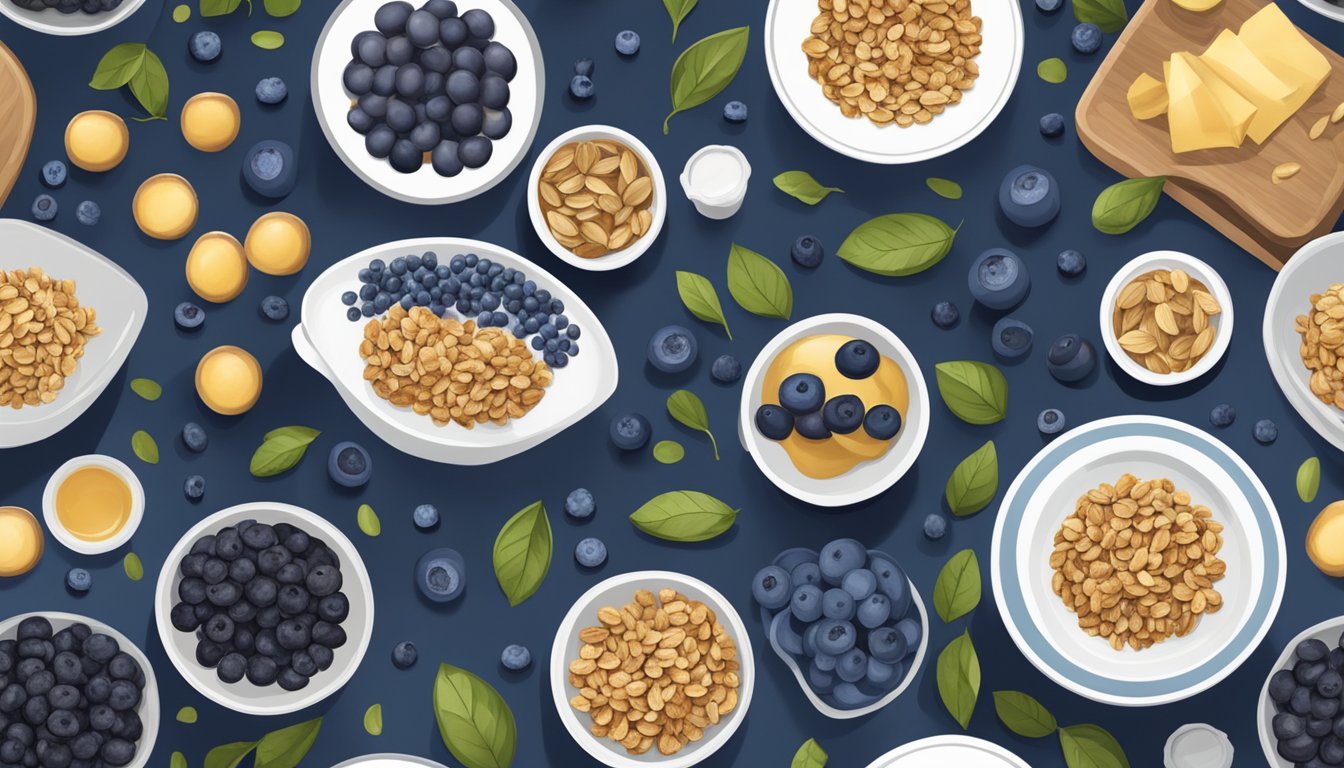How Long Do Dried Blueberries Last?
Shelf Life and Storage Tips
Dried blueberries (how long do dried blueberries last?) are a popular snack due to their sweet flavor and nutritional benefits. They are rich in vitamins and antioxidants, making them a healthy addition to any diet. Unlike their fresh counterparts, dried blueberries have a significantly longer shelf life, allowing them to be enjoyed throughout the year. Their longevity is largely dependent on proper storage conditions.
The shelf life of dried blueberries can range from several months to a year, or even longer when stored under ideal conditions. To maintain their quality, it is crucial to keep them in a cool, dry place, away from direct sunlight and moisture. Exposure to air and humidity can accelerate the degradation process, leading to a loss of flavor and texture.
For maximum longevity, it is advisable to store dried blueberries in airtight containers or heavy-duty plastic bags after opening. This method of storage not only preserves their taste but also prevents spoilage, ensuring that these delightful berries can be savored as a nutritious snack or recipe ingredient for an extended period.
Understanding Dried Blueberries
Dried blueberries are a nutrient-dense snack that retain most of their original antioxidants and vitamins post the drying process. They are known for their convenience and long shelf life, making them a desirable alternative to fresh blueberries.
Nutritional Profile
Dried blueberries are rich in antioxidants, which are crucial for neutralizing free radicals in the body. They also provide a good source of vitamins, such as Vitamin C and Vitamin K. The drying process condenses the blueberries, which can increase the sugar content per serving, but the fiber content remains significant. Fiber is essential for digestive health.
Nutritionally, they offer several benefits, including:
Maintaining a healthy digestive system due to their fiber content.
Contributing to heart health through antioxidants.
Supporting the immune system with Vitamin C.
Drying Process
The drying process involves removing water from blueberries, which concentrates their natural sugars and flavors. It's typically done in one of two ways:
Commercial Drying: Uses large-scale dehydrators and is carefully controlled to ensure even drying throughout the berries.
Home Drying: Can be performed using ovens or food dehydrators, but requires careful attention to prevent over-drying.
To achieve a moisture content of about 20 percent, the berries are conditioned, which ensures they are dried evenly. Properly dried blueberries are less prone to spoilage and can be stored for an extended period.
Shelf Life and Quality Indicators
When assessing dried blueberries' shelf life and quality, one should consider not only the duration but also changes in appearance, texture, and any signs of spoilage. Understanding these factors will help ensure that the dried blueberries consumed are both safe and of desirable quality.
Appearance and Texture
Dried blueberries should retain a characteristic deep blue to purple color and plump yet somewhat firm texture. Over time, they may become less plump and more chewy. A quality dried blueberry should not be mushy or overly hard. Any discoloration or deviation from their typical texture could indicate a decrease in quality.
Spoilage Signs
Signs that dried blueberries have spoiled include:
Mold development: Any visible mold or a musty smell indicates spoilage.
Discoloration: White, yellow, or green spots suggest deterioration.
Off-putting odor: Any unexpected or sour smells can signal that they are unfit for consumption.
Changed texture: Blueberries that have become excessively dry, mushy, or have hardened significantly should not be eaten.
One can generally expect properly stored dried blueberries to maintain their best quality for 12 to 18 months, with the potential to be safe for consumption for even longer if kept in ideal conditions, such as a cool, dry place, or frozen. However, these blueberries may lose their desirable sweet taste and pleasant texture the further they are from their best-by date.
Storage Solutions
Proper storage of dried blueberries is crucial to maintain their best quality and freshness. The key factors influencing the longevity of dried blueberries include temperature, moisture, and the type of container used. Here are specific techniques to store dried blueberries effectively.
Pantry Storage
In a cool, dark place, such as a pantry, dried blueberries can be kept in airtight containers like sealed glass or plastic containers. This method typically allows the blueberries to maintain their freshness for:
6 to 12 months at room temperature
Storage tips:
Ensure containers are completely dry before use to prevent moisture buildup.
A cool pantry away from sources of heat preserves the blueberries' flavor and texture.
Refrigerating
Storing dried blueberries in the refrigerator is advisable in hot, humid climates. Here's how refrigeration can help:
Extends shelf life due to a consistent and cool environment
Optimal for maintaining freshness once the original package is opened
Storage tips:
Use plastic containers or vacuum-seal bags to minimize exposure to air and moisture.
Refrigerated dried blueberries can last well beyond normal room temperature storage duration.
Freezing Techniques
Using the freezer to store dried blueberries presents the longest preservation option:
Up to 2 years for unopened and properly sealed packages
Beneficial for maintaining nutritional content over long periods
Storage tips:
Freezer-safe airtight containers or bags should be used.
Ensure to remove as much air as possible before sealing to deter freezer burn and oxidation.
By adhering to these storage solutions, one can ensure that dried blueberries are properly stored, thereby retaining their optimal taste and nutritional benefits for consumption at a later date.
Factors Affecting Longevity
The shelf life of dried blueberries is influenced by several key environmental and storage factors. Understanding these can help maintain their quality for as long as possible.
Temperature and Climate
Temperature: Dried blueberries last longer when stored in cooler environments. High temperatures can accelerate the degradation process, leading to a shorter shelf life. Keeping dried blueberries in a part of the home that remains consistently cool or even refrigerating them can extend their life.
Climate: In hot and humid environments, there's an increased risk of moisture affecting dried blueberries. It's advisable to store them in conditions where both temperature and humidity are controlled to evade spoilage.
Moisture Content
Moisture is one of the primary adversaries of dried fruit (how long does dried fruit last?) longevity. Dried blueberries should have a moisture content of about 20 percent to ensure they remain shelf-stable. Excessive moisture can lead to the growth of mold or bacteria, significantly reducing their shelf life.
Container Selection
Container: Choosing the right type of container is vital for prolonging the life of dried blueberries. They should be stored in airtight containers to prevent exposure to air and moisture.
Airflow: Good containers should also minimize airflow, which can otherwise carry moisture and contaminants that might spoil the blueberries. Vacuum sealing is an effective method to remove air from the storage environment.
Exposure to Light: Direct exposure to light can degrade dried blueberries both in flavor and nutritional value. Containers that block out light or opaque storage areas are recommended to protect them from light-related spoilage.
Usage in Culinary Preparations
Dried blueberries offer versatility in culinary applications, extending beyond simple snacks to a myriad of recipes where their concentrated sweetness and nutrition enhance the dish's complexity and flavor profile.
Baking Inclusions
In baking, dried blueberries are a staple ingredient for muffins and other baked goods. They provide a chewy texture and rich flavor without adding excess moisture that can alter the batter's consistency. Chefs frequently incorporate them into:
Muffin mixtures
Scone dough
Pancake batter
Bread recipes
Tip: To prevent the berries from sinking to the bottom, lightly coat them in flour before folding into the batter.
Cereal and Snack Enhancements
For breakfast and snack options, dried blueberries offer a convenient and healthy topping or inclusion. They are commonly found in:
Cereal: Sprinkled over cold cereals or mixed into hot cereals like oatmeal for added sweetness.
Granola: Baked into homemade granola recipes to complement nuts (how long do nuts last?) and grains.
Yogurt: Used as a topping in parfaits or mixed with yogurt for a burst of flavor.
Trail Mix: Combined with nuts, seeds, and other dried fruits in trail mix for a nutritious snack.
Tip: Keep in mind that while they are nutrient-rich, dried blueberries are also higher in sugar compared to their fresh counterparts, so moderation is key.
Savory Applications
Dried blueberries can also be a surprising addition to savory dishes. Their sweetness can offset the richness of meats and add a unique flavor to sauces and glazes. Some specific uses include:
Dressing for salads
Compotes accompanying pork or duck
Stirred into rice or quinoa side dishes
Tip: Balancing the sweetness with acidic components like vinegar or citrus can create a well-rounded flavor in savory dishes.
Extending Shelf Life through Processing
Proper processing methods are imperative for extending the shelf life of blueberries. Both home dehydration methods and commercial preservation techniques are utilized to transform fresh blueberries into long-lasting dried products.
Home Dehydration Methods
Home dehydration provides individuals the opportunity to dehydrate fresh blueberries ensuring their longevity. Two primary methods homeowners might employ are using a food dehydrator or an oven.
Food Dehydrator: By using a dehydrator, one can evenly and efficiently dehydrate blueberries. The process involves placing blueberries in single layers on the dehydrator's trays and drying them at a recommended temperature (usually between 125°F to 135°F) for about 10 to 18 hours.
Oven Dehydration: For those without a dehydrator, an oven set to a low temperature, around 200°F, can suffice. The key is to keep the oven door slightly open to allow moisture to escape and to turn the blueberries occasionally for an even dry.
Commercial Preservation
Commercial processors have adopted sophisticated methods to ensure dried blueberries are shelf-stable.
Large-Scale Dehydrators: Commercially, blueberries are dehydrated using large, industrial food dehydrators that can process significant volumes at a controlled temperature, ensuring consistency and quality.
Packaging Techniques: After dehydration, blueberries are often preserved using airtight packaging to protect against moisture and oxidation. Vacuum-sealed bags and containers with oxygen absorbers can prolong the shelf life significantly.
By employing these processing methods, the shelf life of blueberries can be considerably extended, providing consumers with a durable and convenient food product.
Rehydrating Dried Blueberries
Rehydrating dried blueberries restores their moisture, making them plump and soft, suitable for various recipes. It's important to manage moisture levels carefully to avoid them becoming too mushy.
Steps for Rehydration
To rehydrate blueberries, one should typically:
Heat Water: Bring water to a warm temperature, not boiling, as excessive heat can make berries mushy.
Soak: Immerse the dried blueberries in the warm water in a 2:1 ratio of liquid to berries.
Time: Allow the blueberries to soak for 5-10 minutes. Longer periods can be used for a softer texture, but this should be done with caution to prevent them from becoming too mushy.
Drain: Remove excess water carefully to prevent the berries from becoming too damp.
Dry: Pat the rehydrated blueberries dry with a paper towel, allowing any excess moisture to escape without drying them out completely.
Incorporation into Wet Dishes
Incorporating rehydrated blueberries into wet dishes such as smoothies or porridge is seamless:
Blanching: Briefly soak the blueberries in hot water and then immediately run cold water over them to ensure they become tender but retain their structure.
Direct Addition: Add the rehydrated blueberries directly to the dish during the cooking process, which allows them to absorb flavors and integrate smoothly into the recipe.
Adjust Liquids: When adding rehydrated blueberries to recipes, one may need to reduce other liquid ingredients slightly to maintain the desired consistency.
Health Aspects
Dried blueberries are not only a tasty treat but also a nutritious addition to one's diet, holding value in both their nutrient content and dietary flexibility.
Nutritional Value
Dried blueberries retain much of the nutritional benefits of their fresh counterparts. Although the drying process can reduce vitamin C content, they remain a rich source of antioxidants, which are vital for health protection against free radicals. Fiber is another significant component in dried blueberries, supporting digestive health.
Nutritional Composition:
Antioxidants: Helps in reducing oxidative stress
Fiber: Aids in digestion and maintaining blood sugar levels
Vitamin K: Essential for bone health and blood clotting
Gluten-Free: A safe option for individuals with gluten sensitivities or celiac disease
Dietary Considerations
Dried blueberries offer versatility for various dietary needs. As a healthy snack, they are an excellent choice for those looking for nutrient-dense options. They fit well into gluten-free diets, providing a source of vitamins, fiber, and antioxidants without triggering gluten-related sensitivities.
Key Points for Diet Inclusion:
Healthy Snack: Low in calories when consumed in moderation
Gluten-Free: Compatible with gluten-free eating plans
Fiber Content: May help in feeling full longer, assisting in weight management strategies
By incorporating dried blueberries into one's diet, individuals can enjoy a convenient and healthy snack that complements a well-rounded nutritional intake.
Preventing Spoilage and Waste
Preventing spoilage in dried blueberries entails proper drying techniques, correct storage conditions, and the ability to recognize early indications of mold.
Proper Drying and Storage
The key to preserving dried blueberries starts with ensuring proper drying. One must remove as much moisture as possible without compromising the blueberries' integrity. A dehydrator can achieve this, ideally setting the temperature between 125°F to 135°F (52°C to 57°C). The blueberries should be uniformly sliced or punctured to allow even drying.
Storage is equally critical; dried blueberries' longevity is significantly influenced by how they are kept. Moisture and air exposure hasten spoilage. It is recommended to store dried blueberries in a cool, dry place away from direct sunlight. Once opened, they should be transferred to:
Sealed glass jars
Airtight containers
Heavy-duty freezer bags
For extended shelf life, one might consider adding oil to lightly coat the blueberries or use vacuum-sealed containers to reduce airflow and moisture contact. Some opt to add preservatives or sweeteners, which may alter the fruit's natural state but can inhibit mold growth.
Detecting Early Signs of Mold
Vigilance against early signs of mold ensures one does not consume spoiled dried blueberries. Signals to watch for include:
Unusual texture: If the blueberries become overly sticky, tacky, or clump together abnormally, it may indicate moisture intrusion.
Visual changes: Discoloration or the presence of surface fuzzy growths are clear indicators of mold.
Off-putting odors: Any sour or musty smells are a red flag for potential spoilage.
The removal of debris from the drying process can prevent uneven drying which, reduces the risk of mold development. If any signs of spoilage are detected, those blueberries should be discarded immediately to prevent the spread of mold to uncontaminated portions.
Innovative Uses of Dried Blueberries
Dried blueberries open up a world of culinary opportunities, offering a potent blend of flavor and nutrition. They can be seamlessly integrated into various recipes and contribute unique characteristics to gluten-free and healthy snack options.
Crafting Homemade Mixes
For Homemade Granola and Trail Mix:
Granola: Dried blueberries add a chewy texture and tartness to homemade granola. Mix them with oats, nuts, and a sweetener like honey before baking to create a balanced and nutritious breakfast option.
Trail Mix: Combine dehydrated blueberries with nuts and seeds for a trail mix. This not only imparts a burst of fruity flavor but also provides an easy-to-carry, healthy snack for on-the-go activities.
Creating Gluten-Free Options
When Baking Gluten-Free Goods:
Cookies: Utilize ripe, dried blueberries to enhance gluten-free cookie recipes. Their concentrated sweetness and moisture enrich these baked treats while ensuring they align with gluten-free dietary needs.
Muffins: Incorporate dried blueberries into gluten-free muffin recipes. The berries distribute evenly throughout the batter, offering pockets of juicy flavor, and supplementing the texture that is often desired in gluten-free baking.
Dried blueberries' adaptability extends beyond traditional cooking methods and provides innovative ways to enrich the diet of those seeking both gluten-free options and healthy snacks. Their use in homemade mixes and baking creates new possibilities for enjoying this nutritious fruit.


